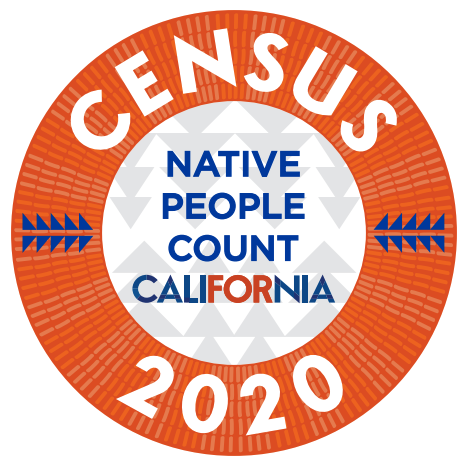California Native American youth are stepping up to lead during the 2020 Census to help educate and empower their peers, families, and communities.
The Native People Count California campaign has worked with Native Youth since January to provide our youngest voices with the tools and guidance to participating in the 2020 Census.
The campaign is a collaboration between the California Governor’s Office of the Tribal Advisor, the California Complete Count Census 2020 office, California Indian Manpower Consortium, and the California Native Vote Project.
Kaytlynn Johnston, 15, of the Bishop Paiute Tribe, recently expressed to her peers, elders, and community members through public service announcements that they have a chance for their voices to be heard by participating in the 2020 Census.
Ms. Johnston is Miss Pabanamanina Powwow Princess and president of the Bishop Paiute Tribal Youth Council. She is also a member of the United National Indian Tribal Youth (UNITY).
“Being counted in the 2020 Census means Native people will have a chance to be heard in Sacramento and Washington, D.C.,” Johnston said.
Many Native youth feel that they’re invisible within their towns and cities and voice frustration that even though they are Indigenous to California lands, they are left out of the political process.
California Native American youth today are savvier, both politically and technologically. They recognize their voice needs to be heard and counted at every level of government and they are taking steps to make sure that happens.
Cities and towns in California have been built on traditional Native American lands. While many youth and community leaders accept this, they do not accept being invisible within their ancestral lands.
In her community, Ms. Johnston sees the impact of a Native Complete Count as a positive step forward to help her community and tribe with much-needed funding for tribal programs and services. “We need additional funding for the community, especially in healthcare, public safety, housing, and education and cultural preservation,” said Ms. Johnston.
The Bishop Paiute Tribe is located in Inyo County in the upper Owens Valley in the eastern Sierra region in central California. To the west are the spectacular eastern Sierra Nevada Mountains. To the east is the state of Nevada. Bishop Paiute Tribe is one of 109 federally recognized tribes in California, with over 2,000 tribal citizens out of a total population of 10,000 people within the City of Bishop, California.
“I strive to be a positive role model to the youth and help elders in my community and the valley to show them we all can be a force of change in our community. This valley and our cultural landscapes are beautiful and sacred. But we Paiutes have been largely forgotten and invisible as first Americans within our communities. I am participating to make us visible and heard to our representatives in California and the federal government,” Johnston said.
For people who don’t want to be counted or who don’t understand what it means to be counted in her community, Kaytlynn said she hopes she can change their mind. She is encouraging Native Youth in her community to bridge the generational and technology divide by volunteering time to assist parents and grandparents to fill out the Census online.
“We can talk to our families about it. It is a huge opportunity. And yes, you can help the elders and your parents fill out the Census online because some elders and parents aren’t tech-savvy.”
Kaytlynn explains that the Census is a duty and a human right as a citizen. She notes that the Census equates to ‘we see you, we hear you’ by lawmakers.
She describes her work with public service announcements as central to her role as a leader among her peers and in her rural tribe.
“There is a big difference to be counted in rural communities than in urban areas. When I participated in the Census public service announcements, we found people from rural areas are historically underrepresented in the Census. Filling out the Census is very powerful, and it makes a huge difference in the whole community.”
Leticia Gonzales, sister of Katlynn, is a youth prevention employee at the Toiyabe Indian Health Project in the Behavioral Health Department of Family Services in Bishop, California.
Like her younger sister, Gonzales is involved with UNITY and serves as a peer guide for the Healing Indigenous Life Initiative, a partnership with the Office of Juvenile Justice and Delinquency Prevention.
Leticia said the overall goal for rural communities like Bishop with the Census is to be counted so that the state and federal governments can step up funding for needed services for rural communities to increase economic development, education, public safety, and healthcare.
“Everybody must be counted. The Census is a central tool for the government in making their formula funding decisions for the next ten years for our Native communities. We need to be active now,” Gonzales said. Her sister, Ms. Johnston agrees. She added, “We know where we come from, we know who we are. We are here to protect these lands for generations to come.”
###
These interviews and articles are written on behalf of the Native People Count California campaign. For press inquiries or questions, please contact us via email at info@nativepeoplecountca.org.
About NPCCA
Native People Count California is the official California complete count – census 2020 tribal media outreach campaign. Launched in January 2020 – the Native People Count CA campaign is a collaboration between Governor’s Office of the Tribal Advisor, the California Complete Count – Census 2020 office, and Tribal Media Outreach Partners NUNA Consulting Group, LLC, California Indian Manpower Consortium, Inc. (CIMC), and the California Native Vote Project (CANVP). Native People Count CA was created with the belief that the 2020 Census is an integral piece to upholding the fiduciary responsibility by the United States federal government to Tribes and its delegated authority to state and local governments.
